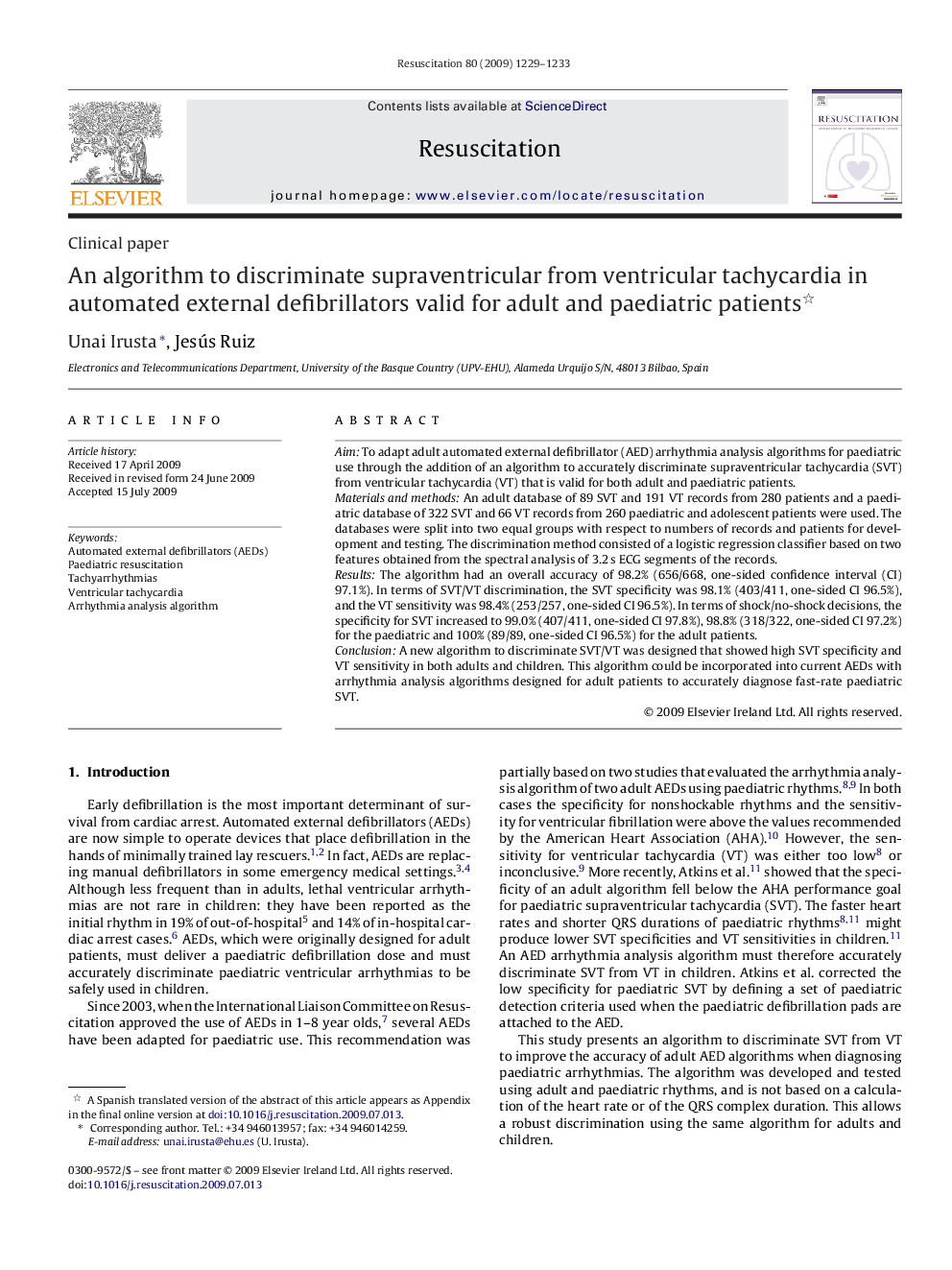| Article ID | Journal | Published Year | Pages | File Type |
|---|---|---|---|---|
| 3010252 | Resuscitation | 2009 | 5 Pages |
AimTo adapt adult automated external defibrillator (AED) arrhythmia analysis algorithms for paediatric use through the addition of an algorithm to accurately discriminate supraventricular tachycardia (SVT) from ventricular tachycardia (VT) that is valid for both adult and paediatric patients.Materials and methodsAn adult database of 89 SVT and 191 VT records from 280 patients and a paediatric database of 322 SVT and 66 VT records from 260 paediatric and adolescent patients were used. The databases were split into two equal groups with respect to numbers of records and patients for development and testing. The discrimination method consisted of a logistic regression classifier based on two features obtained from the spectral analysis of 3.2 s ECG segments of the records.ResultsThe algorithm had an overall accuracy of 98.2% (656/668, one-sided confidence interval (CI) 97.1%). In terms of SVT/VT discrimination, the SVT specificity was 98.1% (403/411, one-sided CI 96.5%), and the VT sensitivity was 98.4% (253/257, one-sided CI 96.5%). In terms of shock/no-shock decisions, the specificity for SVT increased to 99.0% (407/411, one-sided CI 97.8%), 98.8% (318/322, one-sided CI 97.2%) for the paediatric and 100% (89/89, one-sided CI 96.5%) for the adult patients.ConclusionA new algorithm to discriminate SVT/VT was designed that showed high SVT specificity and VT sensitivity in both adults and children. This algorithm could be incorporated into current AEDs with arrhythmia analysis algorithms designed for adult patients to accurately diagnose fast-rate paediatric SVT.
